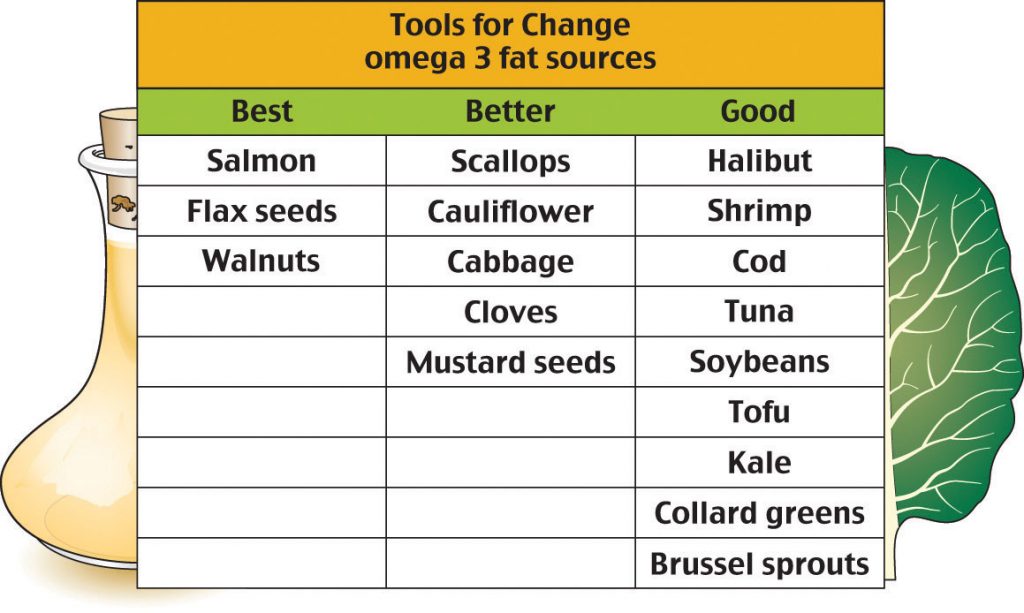University of Hawai‘i at Mānoa Food Science and Human Nutrition Program and Human Nutrition Program
Storing Energy
The excess energy from the food we eat is digested and incorporated into adipose tissue, or fatty tissue. Most of the energy required by the human body is provided by carbohydrates and lipids. As discussed in the Carbohydrates chapter, glucose is stored in the body as glycogen. While glycogen provides a ready source of energy, lipids primarily function as an energy reserve. As you may recall, glycogen is quite bulky with heavy water content, thus the body cannot store too much for long. Alternatively, fats are packed together tightly without water and store far greater amounts of energy in a reduced space. A fat gram is densely concentrated with energy—it contains more than double the amount of energy than a gram of carbohydrate. Energy is needed to power the muscles for all the physical work and play an average person or child engages in. For instance, the stored energy in muscles propels an athlete down the track, spurs a dancer’s legs to showcase the latest fancy steps, and keeps all the moving parts of the body functioning smoothly.
Unlike other body cells that can store fat in limited supplies, fat cells are specialized for fat storage and are able to expand almost indefinitely in size. An overabundance of adipose tissue can result in undue stress on the body and can be detrimental to your health. A serious impact of excess fat is the accumulation of too much cholesterol in the arterial wall, which can thicken the walls of arteries and lead to cardiovascular disease. Thus, while some body fat is critical to our survival and good health, in large quantities it can be a deterrent to maintaining good health.
Regulating and Signaling
Triglycerides control the body’s internal climate, maintaining constant temperature. Those who don’t have enough fat in their bodies tend to feel cold sooner, are often fatigued, and have pressure sores on their skin from fatty acid deficiency. Triglycerides also help the body produce and regulate hormones. For example, adipose tissue secretes the hormone leptin, which regulates appetite. In the reproductive system, fatty acids are required for proper reproductive health. Women who lack proper amounts may stop menstruating and become infertile. Omega-3 and omega-6 essential fatty acids help regulate cholesterol and blood clotting and control inflammation in the joints, tissues, and bloodstream. Fats also play important functional roles in sustaining nerve impulse transmission, memory storage, and tissue structure. More specifically in the brain, lipids are focal to brain activity in structure and in function. They help form nerve cell membranes, insulate neurons, and facilitate the signaling of electrical impulses throughout the brain.
Insulating and Protecting
Did you know that up to 30 percent of body weight is comprised of fat tissue? Some of this is made up of visceral fat or adipose tissue surrounding delicate organs. Vital organs such as the heart, kidneys, and liver are protected by visceral fat. The composition of the brain is outstandingly 60 percent fat, demonstrating the major structural role that fat serves within the body. You may be most familiar with subcutaneous fat, or fat underneath the skin. This blanket layer of tissue insulates the body from extreme temperatures and helps keep the internal climate under control. It pads our hands and buttocks and prevents friction, as these areas frequently come in contact with hard surfaces. It also gives the body the extra padding required when engaging in physically demanding activities such as ice- or roller skating, horseback riding, or snowboarding.
Aiding Digestion and Increasing Bioavailability
The dietary fats in the foods we eat break down in our digestive systems and begin the transport of precious micronutrients. By carrying fat-soluble nutrients through the digestive process, intestinal absorption is improved. This improved absorption is also known as increased bioavailability. Fat-soluble nutrients are especially important for good health and exhibit a variety of functions. Vitamins A, D, E, and K—the fat-soluble vitamins—are mainly found in foods containing fat. Some fat-soluble vitamins (such as vitamin A) are also found in naturally fat-free foods such as green leafy vegetables, carrots, and broccoli. These vitamins are best absorbed when combined with foods containing fat. Fats also increase the bioavailability of compounds known as phytochemicals, which are plant constituents such as lycopene (found in tomatoes) and beta-carotene (found in carrots). Phytochemicals are believed to promote health and well-being. As a result, eating tomatoes with olive oil or salad dressing will facilitate lycopene absorption. Other essential nutrients, such as essential fatty acids, are constituents of the fats themselves and serve as building blocks of a cell.
Figure 5.2 Food Sources of Omega 3’s

Note that removing the lipid elements from food also takes away the food’s fat-soluble vitamin content. When products such as grain and dairy are processed, these essential nutrients are lost. Manufacturers replace these nutrients through a process called enrichment.
Learning Activities
Technology Note: The second edition of the Human Nutrition Open Educational Resource (OER) textbook features interactive learning activities. These activities are available in the web-based textbook and not available in the downloadable versions (EPUB, Digital PDF, Print_PDF, or Open Document).
Learning activities may be used across various mobile devices, however, for the best user experience it is strongly recommended that users complete these activities using a desktop or laptop computer and in Google Chrome.
A class of nutrients containing carbon, hydrogen, a little oxygen, and some other atoms. Commonly known as fats that include fatty acids, triglycerides, phospholipids, and sterols.
A chemical messenger in the body that is released into the blood from one specific location in the body and travels to another location, where it elicits a specific response.
The amount of a dietary nutrient that is absorbed and utilized by the body.
A carotenoid that can be cleaved to release two retinol molecules.

